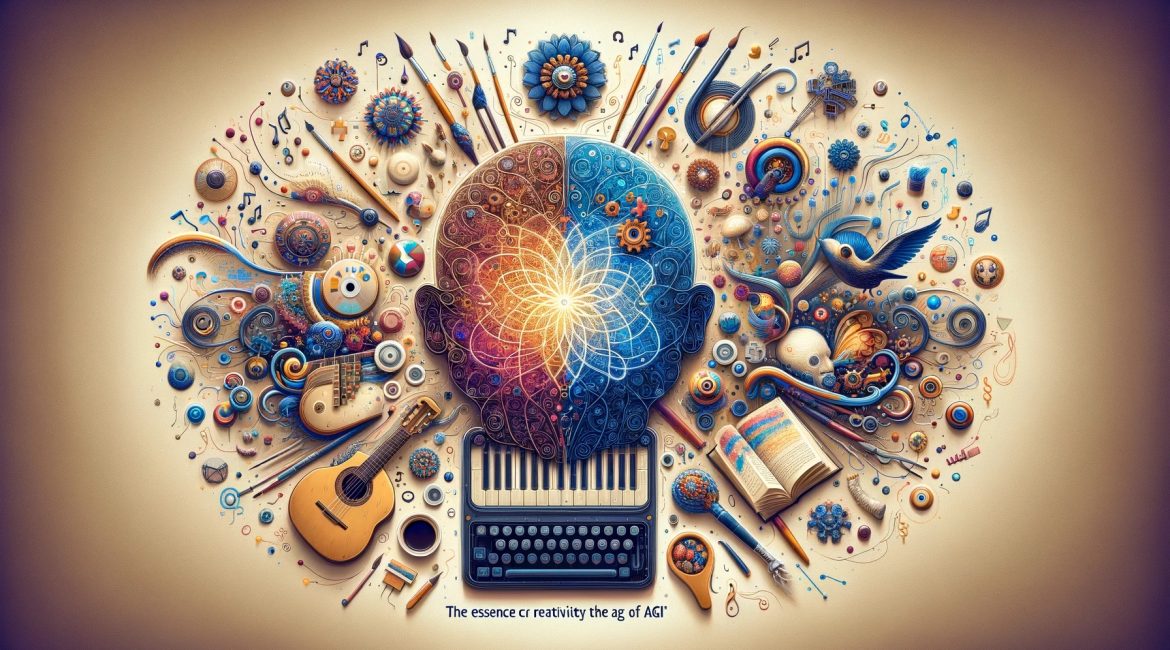As artificial intelligence rapidly advances, we are approaching a time when machines can produce art, literature, and music that resonates emotionally with humans. Recent examples like the painting “Edmond de Belamy” created by an algorithm and signed off by “an algorithm” point to a not-so-distant future where AGI – Artificial General Intelligence – matches or even exceeds human capabilities across many creative domains. This begs the question: what remains uniquely human in our creative expressions when intelligent algorithms can mimic the outputs of our creative spark? Is there an irreducible essence to creativity that emerges from the human condition? Or is the creative process, in all its unpredictability and originality, subject to eventual codification and replication by machines?
Many would argue that, at its core, creativity is rooted in our experiences as limited, subjective beings existing in a mysterious, chaotic world which we strive to understand and depict through artistic expression. It is this grounding in lived experience – our pains, loves, fears, and losses – that injects the emotional resonance into our films, songs, and stories. For the philosopher Henri Bergson, creativity captured an élan vital, a vital impulse at the center of life, filled with emotional energy and intuition. This élan vital is a spark available only to human consciousness, not machinic intelligence guided solely by logical processes.
However, researchers in computational creativity offer a competing perspective. They argue that creativity of any meaningful kind – whether splashing paint on a canvas or writing a poetically resonant novel – involves a combination of well-defined cognitive processes like associative thinking, conceptual blending, and recognizing aesthetic values. While the outputs still require human judgment and acceptance to be considered successful “works of art”, in principle such processes are replicable by AI without needing to emulate the entire spectrum of human lived experience. An AI could be modeled to simulate human creative cognition without developing inner emotional states.
Reconciling whether creativity requires human consciousness or can be algorithmically replicated is a complex philosophical issue. However, in practical terms, AGI will likely produce art, music, and literature that meets many of our benchmarks for creativity, even if it lacks the intrinsic spark of human lived experience.
For example, AI art may capture visual aesthetics as impressively as the work of great painters. AI songs may blend lyrics and melodies in original ways that move us. AI screenplays may depict characters grappling with universal themes as poignantly as the best human storytellers.
Yet its creativity originates from pre-programmed goals, not the messy cauldron of life experience. We may appreciate AI creativity for how it makes us feel, but sense that something essential is missing – the organic link between creative expression and the unpredictability of being human.
In the end, AI may produce art, music, and stories that stir our emotions and senses as profoundly as human-created works. Yet there is comfort that the essence of our films, songs, and poems comes from the messy well of life itself. The spark of human creativity draws from our experiences of love, grief, beauty, and all that comes with mortal existence, however small. Our creative work carries ripples of both joy and vulnerability from having deeply felt the randomness of beauty and tragedy in the world. So while intelligently-produced AI creations may impress, we still appreciate the unfathomable creative process of being human for carrying the echoes of living itself.

